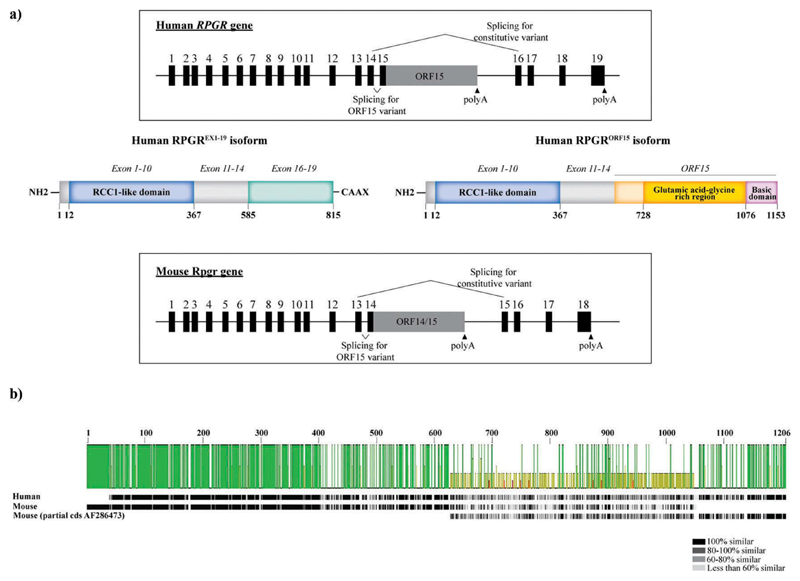Figure 2.
RPGR gene structure and the main isoforms. (a) Schematic representation of the human and mouse RPGR gene structure and the two major protein isoforms (constitutive RPGREX1-19 and RPGRORF15 isoforms). (b) Protein sequence comparison of human and mouse RPGRORF15. The protein sequences for human RPGRORF15 (NP_001030025) and mouse RPGRORF15 (NP_001171421 and the partial coding sequence AF286473) were extracted from NCBI database and aligned using Geneious Prime 2019.1.3. The pairwise identity, represented by the green bars, is 42.4% with a variable level of identity along the sequence. The lowest identity corresponds to the ORF15 region, whilst the conserved regions (RCC1-like domain and basic domain) show the highest identity. The similarity between residues, represented by the grayscale bar, also shows a lesser degree of similarity between the human and the mouse protein sequence in the ORF15 region.

